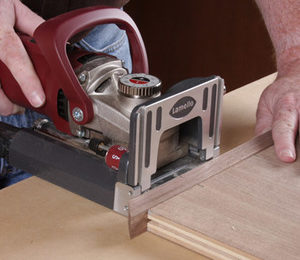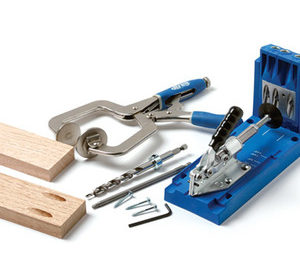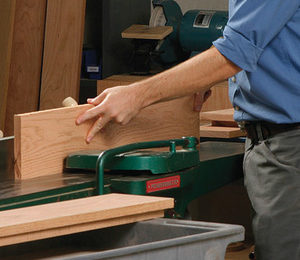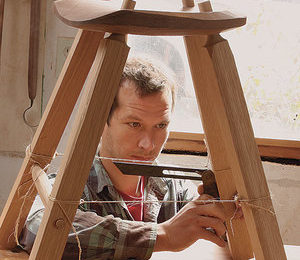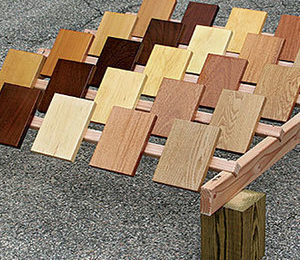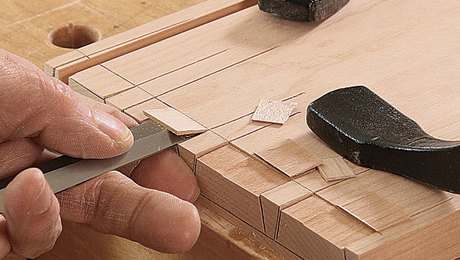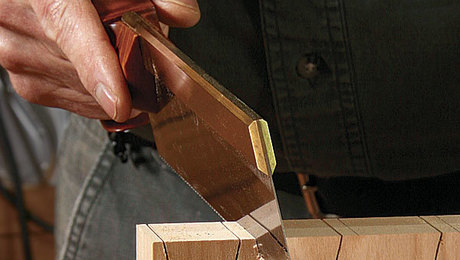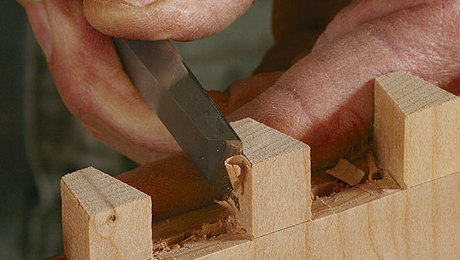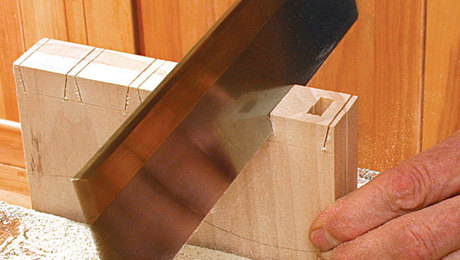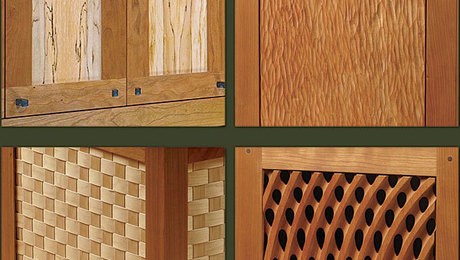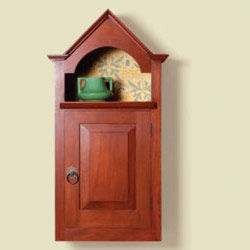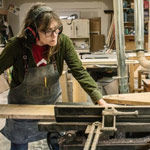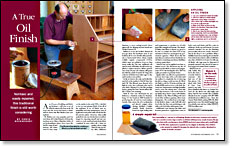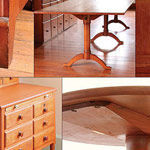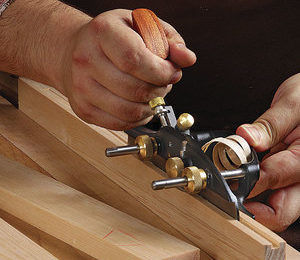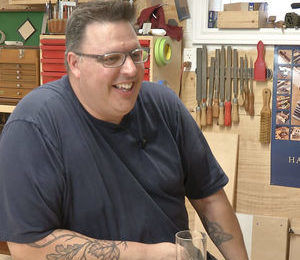Fri, 30 August 2019
Question 1: From Elijah:
Question 2: From Reg:
Segment: All-Time Favorite Tool Mike: Holdfast Ben: CNC used as a pin router Anissa: Her marking gauges
Question 3: From Dave:
Question 4: From Frank: Every two weeks, a team of Fine Woodworking staffers answers questions from readers on Shop Talk Live, Fine Woodworking‘s biweekly podcast. Send your woodworking questions to shoptalk@taunton.com for consideration in the regular broadcast! Our continued existence relies upon listener support. So if you enjoy the show, be sure to leave us a five-star rating and maybe even a nice comment on our iTunes page. |
||||||||||||||||||||
Fri, 16 August 2019
Question 1: From Chase: I have an old 13" hitachi planer I got from craigslist many years ago. It has served me well but is starting to have issues. 13 inches has been useful, but at times I wish it was wider. In your experience is it worth the extra money to buy something bigger, or should I stick with a more reasonable choice like DW735? I have 220v access and floor space, so that isn't an issue. I am in my 30s, have been woodworking for ~10 years. I would like to keep woodworking into my 80s, so I can justify a longer term investment. I can afford a 1.5 or 2k tool, but could buy something else if I stuck with a cheaper planer.
Question 2: From Martin: I know Mike likes to have a small offset between the rails and stiles of his frame-and-panel doors. But how does he then avoid chipping the unsupported inside corners of the stiles when planing the top and bottom of the door to fit the opening?
Segment: All Time Favorite Tool of All Time Barry: SketchUp Mike: Suizan Japanese Saws and DFM Dowel Plate Ben: Shopmade Hot Pipe Bender
Question 3: From RobGoSlow on YouTube: I'm not sure where to submit questions for the podcast but I have one: I'm a very new wood worker with a lower end contractor table saw. Obviously things like the blade angle and fence are not very precise but I want to know what sources of error are there to look out for? What are the types of error you're concerned about with a cheap table saw?
Question 4: From Capt. Zachary J. Daniels: I want to buy a block plane from Lie-Nielsen. I know Mike is a fan of the adjustable mouth block plane. However, I also remember Mike and Matt Kenney having a spirited debate where Matt was extolling the virtues of the rabbeting block plane. I can’t seem to find the original discussion between Matt and Mike. Instead of listening to the entire catalog again, (and without Matt around to defend himself) I’m interested to hear Mike’s opinion on why he prefers the adjustable mouth block plane over the rabbeting block plane. Right now, I only want to buy one block plane as I also have my eye on the No. 62 low angle jack. Thanks for the show and keep up the great work! I became an unlimited member after listening to several of the podcasts, so keep the content coming and inspiring others!
Every two weeks, a team of Fine Woodworking staffers answers questions from readers on Shop Talk Live, Fine Woodworking‘s biweekly podcast. Send your woodworking questions to shoptalk@taunton.com for consideration in the regular broadcast! Our continued existence relies upon listener support. So if you enjoy the show, be sure to leave us a five-star rating and maybe even a nice comment on our iTunes page.
|
||||||||||||||||||||
Fri, 9 August 2019
For more than 25 years GreenWood has worked with artisans in Honduras and the Peruvian Amazon to produce high-quality wood products from well-managed forests. They train woodworkers to use appropriate tools and technologies, and connect their products to good markets. The GreenWood Carver's Mallets are available at LeeValley.com. Support GreenWood's efforts by heading over to their GoFundMe page. |
||||||||||||||||||||
Fri, 2 August 2019
Rollie Johnson and Justin Fink join Tom, Barry, and Ben to discuss new tools being shown at the AWFS fair in Las Vegas |
||||||||||||||||||||
Thu, 18 July 2019
Danish Modern Desk with Tim Rousseau Question 1: From Devin: Question 2: From the Fine Woodworking forum by forum member NewAndGreen: Question 3: Also from Paul:
Price of Osmo Polyx Oil at time of broadcast: .75-Liter=$58.56 Segment: All-Time Favorite Technique of All Time Mike: Tom McLaughlin’s “cut some off and glue it on the other side” technique Anissa: Steve Latta’s hinged flips stop Ben: Using metal files to shape difficult woods Question 4: From Brendan: And from Paul:
Recommendations: Anissa - Ted Talk - Rives: The Museum of Four in the Morning
Every two weeks, a team of Fine Woodworking staffers answers questions from readers on Shop Talk Live, Fine Woodworking‘s biweekly podcast. Send your woodworking questions to shoptalk@taunton.com for consideration in the regular broadcast! Our continued existence relies upon listener support. So if you enjoy the show, be sure to leave us a five-star rating and maybe even a nice comment on our iTunes page.
|
||||||||||||||||||||
Fri, 5 July 2019
Start Woodworking Season 1 by Matt Berger, Asa Christiana https://www.finewoodworking.com/videoworkshop/2019/07/start-woodworking-season-1 Question 1: From Dan: I recently built a pair of desks featured in issue #270. I built them mostly the way Michael Robbins did, however instead of using a domino to construct the top I used pocket screws. I don't own a domino, I opted for a hollow chisel mortiser, and I thought it would be silly to use a hollow chisel mortise. How do you feel about pocket screws versus slip tenons made with a domino? Both tools make joining pieces of wood much simpler. One uses screws, the other uses wood and glue. One is under $100, and the other is over $1000. They are both faster and easier than traditional joinery. Am I wrong to think if I am not going to use traditional joinery pocket screws and domino slip tenons are interchangeable? I love my hollow-chisel mortiser, and if I'm gonna cheat on it, I’ll just use screws.
Question 2: From Chase: I was trying to edge-joint two 10-ft. long boards to make a wide shelf for our closet using a #7 handplane. Typically, I clamp the boards together and plane the common glue edge until I get an even shaving across both. I think that the length of the two boards meant there was some variation that the #7 didn't get. I can't imagine trying to joint these on a jointer, even if I had one. How would you go about making this glue up work?
Segment: All-time favorite tool of all time… for this week Mike: An Exacto knife with a brand new blade Asa: Cordless Trim Routers Ben: James Mursell Travisher (@windsorworkshop)
Question 3: From Chad, I was just listening to episode 190, and a listener asked about which big tool to buy next, a combo planer/jointer or a band saw. I've heard similar questions on the show before. I'm curious as to why you never mention the idea of investing in a makerspace, shared shop, or tool library? There are a lot of great examples of makerspaces that give access to fully stocked wood and metal shops for a reasonable membership fee as well as not-for-profit tool libraries that are usually state funded just like normal libraries that allow for the borrowing of tools like books! For someone who's just getting started in woodworking getting access to a full woodshop for a membership fee that wouldn't be enough to buy a single quality power tool might be worth considering! Maker Spaces: Tool Libraries: Question 4: From David: I am planning to build some outdoor chairs out of mahogany, and was wondering what finish to apply. I would like something that I don't have to touch up every year. Or, should leave them unfinished. How does mahogany age in the weather?
Recommendations: Ben - YouTube Channel: arboristBlairGlenn Every two weeks, a team of Fine Woodworking staffers answers questions from readers on Shop Talk Live, Fine Woodworking‘s biweekly podcast. Send your woodworking questions to shoptalk@taunton.com for consideration in the regular broadcast! Our continued existence relies upon listener support. So if you enjoy the show, be sure to leave us a five-star rating and maybe even a nice comment on our iTunes page.
|
||||||||||||||||||||
Fri, 21 June 2019
Dovetailing episodes from Chris Gochnour's Enfiled Cupboard Video Workshop:
Video: Chris Becksvoort–The Dovetail Master Question 1: Question 2: Question 3:
Segment: All-Time Favorite Technique
Question 4: Question 5: Question 6:
Recommendations: Barry - Get a camelback for hiking Ben - Yeti 18-oz. Rambler Bottle with MagDock Cap |
||||||||||||||||||||
Fri, 7 June 2019
If you are interested in learning more about how you can support Old Sturbridge Village’s cabinet shop, contact their development office at development@osv.org for more information. Question 1: From Joseph:
Question 2: From Nick:
Segment: All-Time Favorite Technique
Ben: Drawing an extra line when sawing on the left side of your layout line Question 3: From Jim: Recommendations: Ben - Sharpen your marking gauge, because you know it's dull Every two weeks, a team of Fine Woodworking staffers answers questions from readers on Shop Talk Live, Fine Woodworking‘s biweekly podcast. Send your woodworking questions to shoptalk@taunton.com for consideration in the regular broadcast! Our continued existence relies upon listener support. So if you enjoy the show, be sure to leave us a five-star rating and maybe even a nice comment on our iTunes page. |
||||||||||||||||||||
Fri, 24 May 2019
Become a Fine Woodworking Unlimited member today and get instant access to all FineWoodworking.com content. Start your free two week trial here. Question 1: From Tom: Question 2: From Richard:
Segment: Smooth Move Ben: Drilling a depth-indication hole on the wrong side. Question 3: From Jesse: Recommendations: Ben - Prismacolor Premier Pencil Sharpener Every two weeks, a team of Fine Woodworking staffers answers questions from readers on Shop Talk Live, Fine Woodworking‘s biweekly podcast. Send your woodworking questions to shoptalk@taunton.com for consideration in the regular broadcast! Our continued existence relies upon listener support. So if you enjoy the show, be sure to leave us a five-star rating and maybe even a nice comment on our iTunes page. |
||||||||||||||||||||
Fri, 10 May 2019
Guest 1: Joe Taylor - Director of Sales for Rikon Joe gave us the ins and outs of a few of Rikon's new products Model 10-326DVR: 14″ Deluxe Bandsaw with Smart Motor DVR Control
Guest 2: Nancy Hiller From Jim: In terms of their aesthetic value, is there a line for you between fine furniture and cabinetry? From Jeff: If you could only design, or build, which would it be and why?
Guest 3: Christian Becksvoort From Scott: What are your top five records at the moment? From Josh: What Shaker element do see reproduced poorly in modern versions of the classics? From Erick: What finish are you using on most of your pieces, polyurethane or oil? And why?
Guest 4: Vic Tesolin From Kevin: What aspects of woodworking do you see most newer students totally over think? From Steve: Awhile ago, you posted a video of a tattoo that had leaves representing your favorite woods to work with. For those of us who are crap at identifying tree leaves, what are your favorite woods to build with?
Every two weeks, a team of Fine Woodworking staffers answers questions from readers on Shop Talk Live, Fine Woodworking‘s biweekly podcast. Send your woodworking questions to shoptalk@taunton.com for consideration in the regular broadcast! Our continued existence relies upon listener support. So if you enjoy the show, be sure to leave us a five-star rating and maybe even a nice comment on our iTunes page. |
||||||||||||||||||||
Shop Talk Live - Fine Woodworking

Categories
generalArchives
AprilMarch
February
January
December
November
October
September
August
July
June
May
April
March
February
January
December
November
October
September
August
July
June
May
April
March
February
January
December
November
October
September
August
July
June
May
April
March
February
January
December
November
October
September
August
July
June
May
April
March
February
January
December
November
October
September
August
July
June
May
April
March
February
January
December
November
October
September
August
July
June
May
April
March
February
January
December
November
October
September
August
July
June
May
April
March
February
January
December
November
October
September
August
July
June
May
April
March
February
January
December
November
October
September
August
July
June
May
April
March
February
January
December
November
October
September
August
July
June
May
April
March
February
January
December
November
October
September
August
July
June
May
April
March
February
January
December
November
October
September
August
July
June
May
April
March
| S | M | T | W | T | F | S |
|---|---|---|---|---|---|---|
| 1 | 2 | 3 | 4 | 5 | 6 | |
| 7 | 8 | 9 | 10 | 11 | 12 | 13 |
| 14 | 15 | 16 | 17 | 18 | 19 | 20 |
| 21 | 22 | 23 | 24 | 25 | 26 | 27 |
| 28 | 29 | 30 | ||||
Syndication

